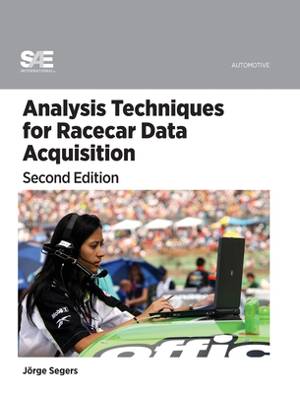
- Retrait gratuit dans votre magasin Club
- 7.000.000 titres dans notre catalogue
- Payer en toute sécurité
- Toujours un magasin près de chez vous
- Retrait gratuit dans votre magasin Club
- 7.000.0000 titres dans notre catalogue
- Payer en toute sécurité
- Toujours un magasin près de chez vous
Description
Racecar data acquisition used to be limited to well-funded teams in high-profile championships. Today, the cost of electronics has decreased dramatically, making them available to everyone. But the cost of any data acquisition system is a waste of money if the recorded data is not interpreted correctly.
This book, updated from the best-selling 2008 edition, contains techniques for analyzing data recorded by any vehicle's data acquisition system. It details how to measure the performance of the vehicle and driver, what can be learned from it, and how this information can be used to advantage next time the vehicle hits the track. Such information is invaluable to racing engineers and managers, race teams, and racing data analysts in all motorsports.
Whether measuring the performance of a Formula One racecar or that of a road-legal street car on the local drag strip, the dynamics of vehicles and their drivers remain the same. Identical analysis techniques apply.
Some race series have restricted data logging to decrease the team's running budgets. In these cases it is extremely important that a maximum of information is extracted and interpreted from the hardware at hand. A team that uses data more efficiently will have an edge over the competition.
However, the ever-decreasing cost of electronics makes advanced sensors and logging capabilities more accessible for everybody. With this comes the risk of information overload. Techniques are needed to help draw the right conclusions quickly from very large data sets.
In addition to updates throughout, this new edition contains three new chapters: one on techniques for analyzing tire performance, one that provides an introduction to metric-driven analysis, a technique that is used throughout the book, and another that explains what kind of information the data contains about the track.
Spécifications
Parties prenantes
- Auteur(s) :
- Editeur:
Contenu
- Nombre de pages :
- 536
- Langue:
- Anglais
Caractéristiques
- EAN:
- 9780768064599
- Date de parution :
- 24-02-14
- Format:
- Livre relié
- Format numérique:
- Genaaid
- Dimensions :
- 203 mm x 254 mm
- Poids :
- 1673 g

Les avis
Nous publions uniquement les avis qui respectent les conditions requises. Consultez nos conditions pour les avis.






